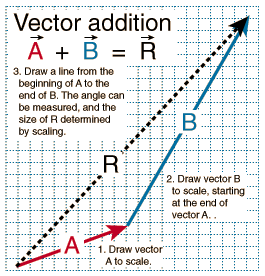Thursday, August 2, 2007
I posted this a long time ago, just needed to repost because I edited this blog..GRAPHICAL METHOD
Adding two vectors A and B graphically can be visualized like two successive walks, with the vector sum being the vector distance from the beginning to the end point. Representing the vectors by arrows drawn to scale, the beginning of vector B is placed at the end of vector A. The vector sum R can be drawn as the vector from the beginning to the end point

http://hyperphysics.phy-astr.gsu.edu/hbase/vect.html








